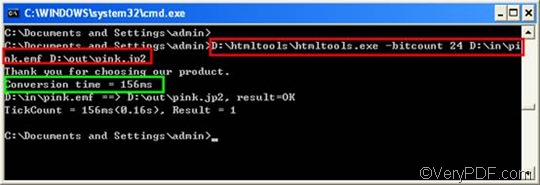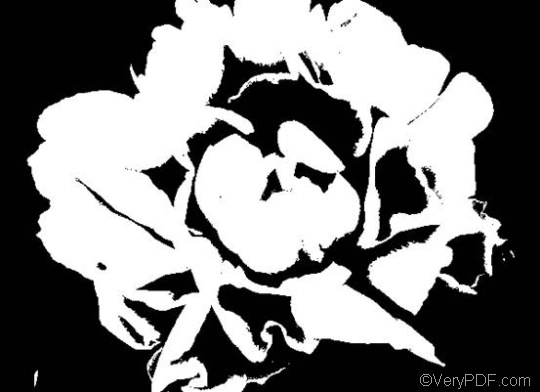Thanks to VeryPDF HTML Converter Command Line, which is a powerful document converter that can be used to convert EMF to JP2, PDF, PS (Postscript), BMP, JPEG, GIF, PNG, WMF, PNM TIF, TIFF, JPG, you are able to set bit depth when converting EMF to JP2 via a command line. VeryPDF HTML Converter Command Linecan greatly enhance work efficiency, especially when there are a bunch of files to convert. VeryPDF HTML Converter Command Line is available at the following website: https://www.verypdf.com/htmltools/index.html#dl . Bit depth is the number of colors that are available in an image's color palette. The higher the bit depth of an image, the more colors are available in the palette.
This article aims to introduce the command -bitcount <int>, which can be used to set bit depth, and show you how to set bit depth when converting EMF to JP2 via a command line.
1. Run the command prompt window
To run the command prompt window, you should take four steps: click “Start”; > click “Run” on the home menu; > enter “cmd” in the “Run” dialog box;>click on “OK” in the “Run” dialog box. The black and white command window will appear on the screen promptly. The following also illustrates the way to run the command prompt window.
2. Enter a command line
To set bit depth and convert EMF to JP2, you should enter a command line, according to the following patter, which contains four parts: three files and one command mentioned.
htmltools -bitcount <int> <EMF file> <JP2 file>
- htmltools denotes the executable file.
- -bitcount <int> is the command that can be used to set bit depth. Three parameter values are allowed: 1, 8 and 24. int stands for integer, and the angle brackets, are used to mark essential contents, which appear without the angle brackets in the command prompt window.
- <EMF file> indicates the input file in EMF format.
- <JP2 file> rerpesents the output file in JP2 format.
The command line pattern above only tells what factors should be included in the command. However, when you enter the command line in the command prompt window, you should enter the whole directories of the executable file, the input file and output file instead of their names. Taking the following command line as an example,
D:\htmltools\htmltools.exe -bitcount 24 D:\in\pink.emf D:\out\pink.jp2
As you can see, the whole directories of the executable file, the input file and the output file, but not the bare names, appear in the command line above. Of course, you can replace the directories in the example with the real directory of the executable file, the input file and the output file in your computer.
- D:\htmltools\htmltools.exe is the directory of the executable file htmltools.exe, which is placed in the folder called htmltools on disc D.
- -bitcount 24 is the command which specifies 24-bit as the bit depth for the output file converted from EMF to JP2. You can change 24 to either 1 or 8, depending on your needs.
- D:\in\pink.emf is the directory of the input EMF file. It leads the computer to find the input file named pink in the folder in on disk D.
- D:\out\pink.jp2 represents the directory of the output file. It specifies JP2 as the format of the output file, names the output file pink, and orders the computer to export the output file to the folder named out on disk D.
3. Press “Enter”
Press “Enter” on the keyboard, and the application can convert EMF to JP2 in a second. The command prompt window below displays command line and the information of conversion. The red rectangle marks the command line, the green rectangle marks the time fo the conversion from EMF to JP2.
The images below are the original EMF file, and the files converted from EMF to JP2.
The original EMF file
1-bit JP2 file
8-bit JP2 file
24-bit JP2 file





